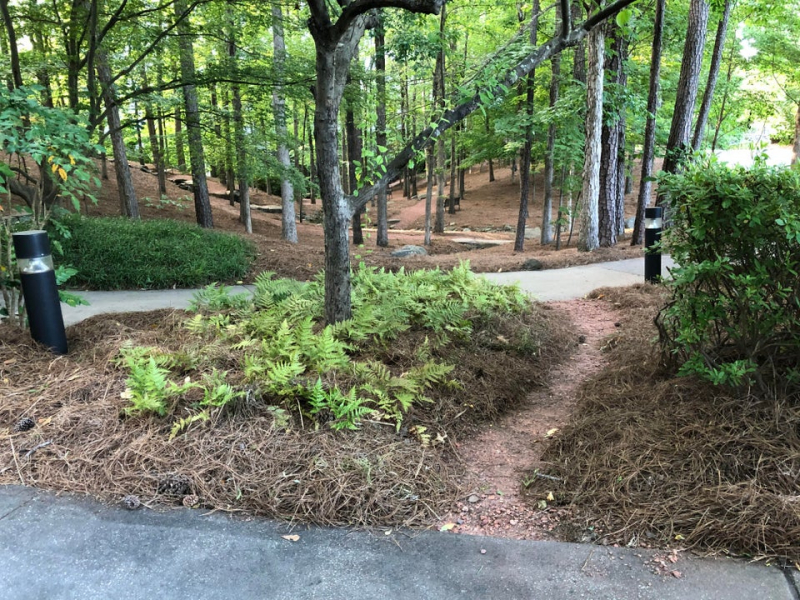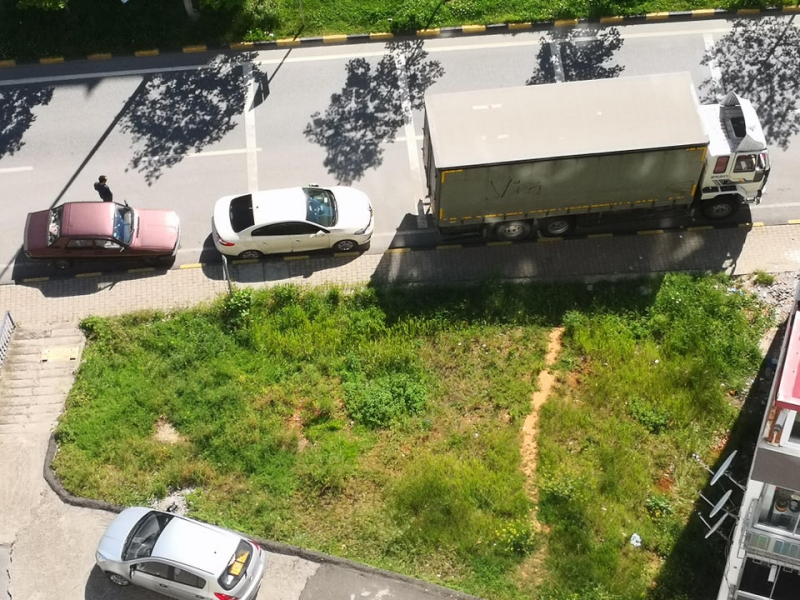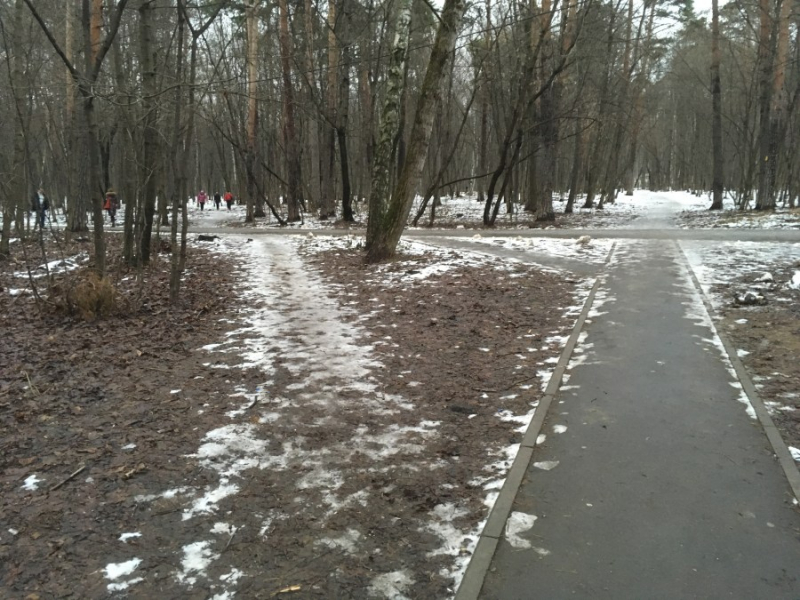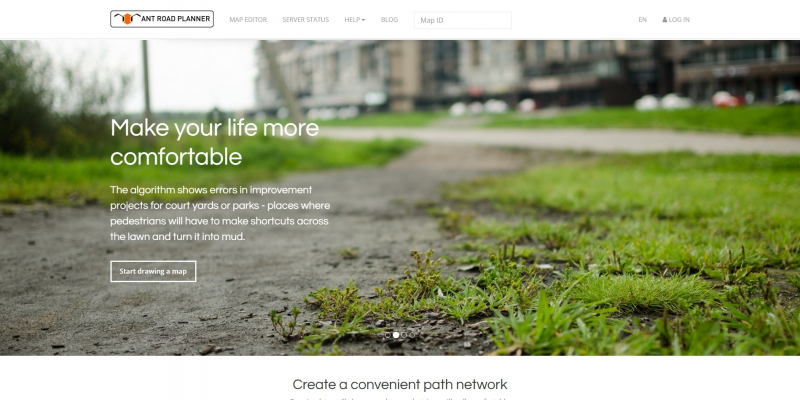Why are desire paths a problem?
There’s quite a number of problems in an urban environment – the list is so extensive that some problems may seem like a joke compared to other, more serious ones. No one tends to care about desire paths. But they are actually a great problem: they mean unsafe pedestrian crossings, dirty courtyards, and expenses on restoration of the old paths and removal of the new ones.
At first glance the reason is simple: some not-too-decent citizens don’t follow the rules and walk where they want despite anything.
But it’s not about the way you behave yourself or your mentality: the problem stems from inadequate urban planning. People take shortcuts on the paths that are important to them because it saves time, it’s easier and more convenient – and overall seems to be more logical.
But why are inconvenient paths designed in the first place? Aren’t they created by the very same people who also know what’s the easier way? Unfortunately, it’s not that simple.

Every landscape designer dreams of creating their own Gardens of Versailles. Surprisingly enough, the inhabitants of residential areas fail to appreciate this particular intention. Possibly because these places have different purposes. People go to Versailles to take leisurely walks; in real life, the space around us is a large map of routes connecting one place to another. That is why, for all the aspirations of beauty, the main task of an urban planner is to create a convenient, optimized, and practical space.
Although the dream of recreating the Gardens of Versailles has its roots, too. Architects and designers learn aesthetics first and foremost – how to create a beautiful plan with a harmony of lines presiding over perfect lawns and fences. But in actual life, even in parks people are more interested in a place’s practicality.
Does it only happen in Russia? Maybe it is a problem of mentality after all?

The problem of desire paths is shared by humanity as a whole, so it doesn’t have a national or a geographical boundary.
There’s even a subreddit where people from all around the globe share their surprising desire path discoveries.
Barrier tape or planted greenery meant to block the paths can be spotted in many of the pictures. However, these attempts of authorities are mostly unsuccessful and pedestrians tend to maintain their right to walk wherever they like.
But why is it such a grave problem? There are actually two of them: a rare employer will set time and money aside for preliminary planning, and a rare landscape designer will actually be able to predict a pedestrian network.
If we need to design paths in an already existing neighborhood, then we can at least be aware of all the main points of attraction for its inhabitants. But what if we’re talking about a new residential area where we don’t know which is the most popular bus stop and which shop has the greatest number of visitors? It’s quite a complicated task for a designer, as it will require a lot of time and effort to predict the result.
Do we trust the pedestrians?

If a desire path appears, you shouldn’t fight it aggressively. The best you can do is admit your mistake and plan another pedestrian network.
What you absolutely shouldn’t do is ban people from taking a path by blocking it with tape or fencing. Try to design new paths, but don’t take the path of war.
There is also an opinion, however, that if we follow the pedestrian logic then the whole city will have to be covered in pavement. That is not completely true. These paths are not just a whim of the citizens, it’s a necessity, so we can use different materials for them – the main issue is their optimal placement.
This rule doesn’t always apply. Naturally, if we’re talking about parks and public places, it’s often not allowed to disturb them with any kind of changes. For instance, the Field of Mars is an object of cultural and architectural heritage. Thus, to get rid of desire paths there a landscape designer will have to find a creative solution – organize an alternative route or plant a green fence.
Moreover, a fence blocking a pedestrian path cannot be moved if it surrounds a playground. It can be that this very fence is the root to every desire path in a neighborhood but demolishing this fence will put children at risk. In this case, we also shouldn’t follow the pedestrians’ wishes.
So how do we design a convenient path?

The official recommendations on pedestrian network design created by the Russian Academy of Architecture and Construction Sciences in 1988 introduce the concept of a check angle. It is the distance between the current direction of a pedestrian and the direction of their goal. A pedestrian will stick to the current path until the angle between the direction of the path and the direction of their goal is less than 30 degrees – and if it is more, the pedestrian will take a shortcut.
So, the rules to making a convenient network are:
- Identify the main points of pedestrian attraction: where and how people will go.
- Separate the important routes from less intensive ones. Find the directions we will not be able to block.
- Take the first two points into consideration and calculate the main paths by connecting the points of attraction using the 30 degrees angle rule. Thus, you will plan a network that will be convenient for the majority of citizens.
You should not plan the paths as an afterthought. But if you are working with a territory where a pedestrian crossing is placed inconveniently, then you need to enquire if there is a chance to move it. If it turns out to be impossible, your main task is to correctly plan a pedestrian path towards the crossing in such a way that will prevent accidents involving pedestrians.
Computer modeling

Modeling pedestrian paths is quite an old trend, and virtual models of the paths have been used for a long time, especially in planning evacuation routes or public places.
But a full-fledged for desire paths forecasting was created by Egor Smirnov, an analyst at ITMO’s Institute of Design & Urban Studies. His creation, ANT ROAD PLANNER, is now an open online service.
The full lecture is available here (in Russian).





